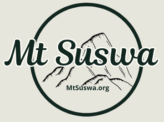Mount Suswa is not owned by the Kenyan government or managed by a formal national park authority like Mount Longonot or Hell’s Gate. Instead, it lies within a community-managed area known as the Suswa Conservancy, which is owned and operated by local Maasai landowners.
🏞️ Who Owns Mt. Suswa?
✅ Ownership Model:
Mt. Suswa is located on communal Maasai land in Narok County, and the area is collectively managed by the local community through the Suswa Conservancy Trust. The conservancy operates under a land-sharing model, where:
- The land remains under individual and communal Maasai ownership.
- Community members collectively manage access, conservation, and tourism.
- A small entry/conservation fee is charged to visitors (typically KES 500–1,000), which supports local development and protects the area.
🧭 Key Facts:
| Feature | Details |
|---|---|
| Legal Status | Not a national park or government reserve |
| Management | Local Maasai community via Suswa Conservancy |
| Entry Point | Suswa Conservancy Gate (south of Mt. Suswa town) |
| Use of Fees | Local income, security, conservation, and education |
| Access | Requires permission; local guides are recommended |
🛡️ Why Community Ownership Matters
- 🐾 Conservation: The local community has a strong incentive to protect wildlife, lava caves, and geothermal features from overuse or degradation.
- 💧 Geothermal Access: Locals tap steam for water—something that would be restricted under stricter national park regulations.
- 🐑 Cultural Heritage: The caves and caldera are used for Maasai rituals, livestock grazing, and seasonal gatherings.
- 💼 Sustainable Tourism: Visitors support livelihoods by paying local guides and using community-run campsites.
🔚 Summary
Mt. Suswa is owned and protected by the local Maasai community, not by the state. The Suswa Conservancy is a model of community-based conservation, combining ecological stewardship, traditional land use, and tourism in one of Kenya’s most geologically unique areas.
